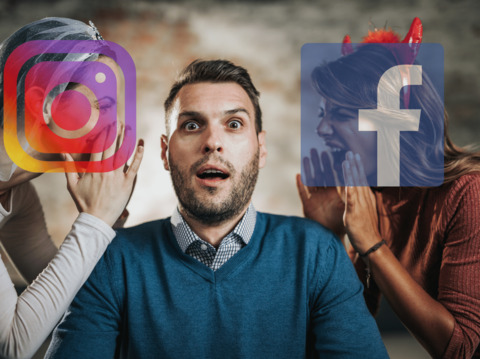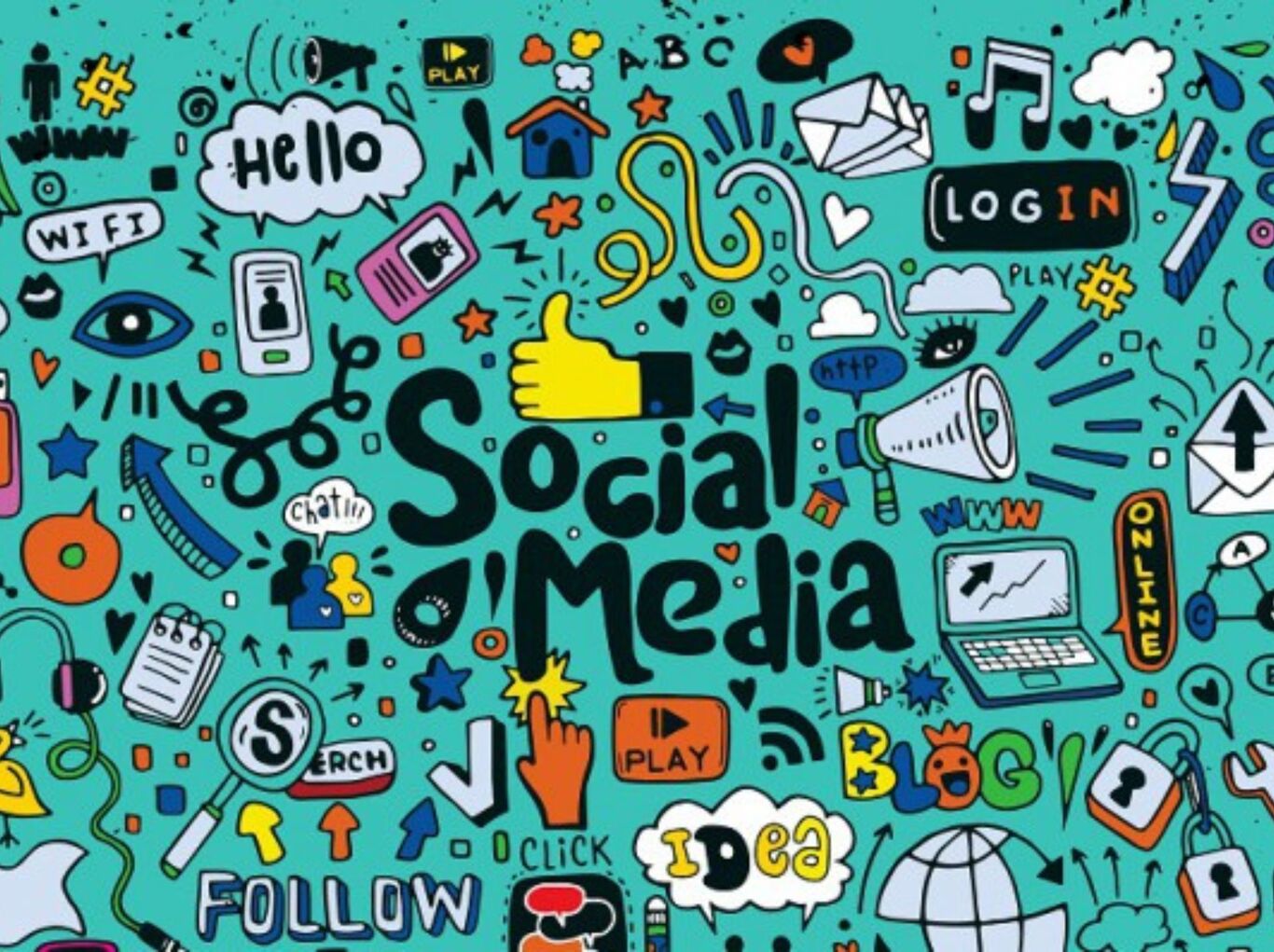Instagram vs Facebook: Which is Better For Businessess

Facebook dominates with 3.07 billion monthly active users, while Instagram recently reached 3 billion users. Yet numbers tell only half the story. Instagram achieves an average engagement rate of 5%, while Facebook manages just 3%.
The platforms serve distinct audiences with different behaviours. Instagram engagement dropped 28% year-over-year to 0.50%, yet still outperforms Facebook's 0.15%.
Choosing between Instagram and Facebook isn't about which platform is "better"; it's about matching the platform's strengths to your audience demographics, content format, and business objectives. Let’s determine how to optimise your marketing investment to deliver the maximum return.
Understanding Social Media Platforms: Instagram and Facebook
Facebook was founded in 2004 by Harvard University graduates Mark Zuckerberg, Eduardo Saverin, Dustin Moskovitz, and Chris Hughes. Its main goal was to enable people to connect over the internet and post photos. The company is now known as Meta and continues to serve over 3 billion monthly active users worldwide.
Instagram was founded much later, in 2010, by a Stanford University graduate named Kevin Systrom. Meta took over the company in just 2 years for $1 billion in cash and stocks. The original purpose of this website was to share photos and enable people to like and comment on them.
After understanding the background of the two important social networking sites, let's compare Facebook and Instagram based on their key features.
Features of Facebook
By changing the privacy settings, Facebook enables you to have a friends list and choose who can see content on your profile. It also allows you to post pictures and maintain photo albums, which you can share with your friends.
Its group pages, fan pages, and business pages feature lets businesses use Facebook as a tool for social media marketing. Facebook's developer network has monetisation options. The Facebook Live feature lets brands stream their events live on the platform.
Features of Instagram
Instagram lets you edit your photos while posting them and has various filters to enhance your image. It enables users to use hashtags, which make your post more visible, and tag other people on a post. Instagram also has a geo-tagging feature that lets you tag the location you are at. Their story feature enables you to post a picture or video for 24 hours, and you can also add various stickers and take polls to increase interaction with your audience.
Instagram's video features, Reels and IGTV, allow you to upload long-form video content for your followers. Its direct messaging feature allows you to send messages to other users. Instagram also has a live streaming feature that helps you connect with your followers in real time.
Demographics: Who Uses What?
Facebook is the oldest social networking site and is still growing. Its 2025 results showed the number of monthly active users to be around 3.07 billion. Facebook gives its marketers access to a diverse audience. Its Ad Manager allows marketers to purchase ads directly from Facebook. Facebook also has a dedicated marketplace where potential customers can place orders directly without going to the shopping website.
Facebook is popular worldwide, making it easy to target demographics worldwide. The most frequent users of Facebook are slightly older than other sites (like Instagram). Facebook users fall between the ages of 25 and 55.
Instagram was launched as a photo-sharing site but is not limited to that. With the addition of features like Stories and Reels, the platform has grown to become more than just a picture board. These features have opened a new dimension of Instagram and Facebook marketing. With its short-form video content features known as Reels, advertisers can showcase their products more visually. However, Facebook’s ad platform is more familiar and easier to use.
Like Facebook, Instagram is also popular and used worldwide. Instagram tends to attract a younger audience than Facebook. The audience ranges between 18 and 34, making it popular among millennials and Gen Z.
The difference between Facebook and Instagram marketing is majorly due to the gap in the age range of the users. Products that can be showcased on Facebook might not work on Instagram due to varied customer preferences. Younger audiences will prefer new products advertised in a short time. However, older customers might take time to review the product's durability.
Content-Type: What Engages Users?
Facebook is mainly about long-form written content, status updates, shared articles and videos, likes, and comments. Facebook users in India generally use the platform to scroll through news articles or long entertainment videos and share them on their profiles. Although there are stories and reels on Facebook, people traditionally engage with the platform. People also find the Facebook marketplace a handy tool to search for a product and connect with the seller.
Instagram has managed to attract the youth. With a decreasing attention span and a busy lifestyle, the Reels feature is gaining more popularity with Instagram users in India. Reels are short-form videos that keep the audience intrigued for a long time on the platform. The 15-30-second videos are fast-paced and keep the users engaged. They share information in a more visual form. The younger generation refrains from reading, and thus, Instagram keeps its users engaged on the platform.
Marketers need to implement different approaches on different sites. They should go for a more detailed product review and engage the audience through comments. On the other hand, Instagram content must be quick and easy to understand. The more information you share in less time, the more beneficial it is.
Content Format Performance: What Should You Post?
The format war is over, and the data reveals clear winners. Forget posting what's easiest to create—success comes from matching format to platform behaviour, and those behaviours have shifted dramatically.
Instagram: Reels Dominate But Carousels Are Important
Instagram Reels from influencers achieve 3-5% engagement - the highest of any format. Carousels follow at 1.7%[1], whilst traditional photo posts deliver just 1.17%, and standard videos limp along at 0.42%. The algorithm isn't subtle about its preferences.
Carousels increase engagement compared to single posts, and with capacity for up to 20 images or videos, they enable fuller storytelling that triggers more swipes. The swipe behaviour signals engagement to Instagram's algorithm, pushing content beyond your follower base.
Static photos haven't died, but they've been demoted. Use them for announcements, quick updates, or moments where stopping the scroll matters more than extended engagement. Save your production budget for formats the algorithm actually rewards.
Facebook: Albums Quietly Wins
The counterintuitive truth about Facebook in 2025: Albums achieve 0.36%[2] engagement rate - the highest of any format. Reels follow at 0.26%, with photos at 0.24%. Despite all the algorithmic pressure toward video, the humble album outperforms.
Albums signal investment. They suggest the content matters enough to curate multiple images into a cohesive story. Facebook's older demographic - users who actually remember when photo albums were physical objects - responds to this format with higher engagement than the platform's forced Reels push.
Cross-Platform Format Strategy: Stop Duplicating, Start Strategising
The biggest mistake brands make? Creating one piece of content and pushing it everywhere. A Reel performs beautifully on Instagram, gets mediocre results on Facebook, and the team concludes "Facebook doesn't work for us." Wrong diagnosis. Facebook doesn't work for Instagram content.
Instagram follows a mobile-first approach built around phone users, with compressed images and seamless smartphone performance. Facebook supports cross-device usage across phones, tablets, and desktops.
Instagram users scroll vertically on mobile, consuming content in 3-second bursts whilst waiting for coffee. Facebook users increasingly engage through groups and communities on larger screens, where they actually read captions and click through albums. Same parent company, fundamentally different user behaviour.
Reach: Which Platform Has a Wider Reach?
Facebook’s early head-starts give it an edge over Instagram in reaching the global market. Facebook is dominant in most regions around the globe.
Instagram's growth has been spontaneous and has managed to grab the attention of urban regions. Its focus on lifestyle, art, and culture has made it more popular in areas where visually driven content is appreciated.
Also read our researched article: Social Media Challenges for Marketers and How to Solve Them
What Differentiates Them from One Another?
When it comes to social media marketing, both Facebook and Instagram have their features and benefits.
Engagement Rate
Facebook, the older player, is used by billions. Instagram is new to the scenario, and hence, Facebook tends to attract an older crowd, whereas Instagram targets a younger audience.
However, this does not limit Instagram's engagement rate. The engagement rate on Instagram is higher than the Facebook engagement rate. This data is important to plan a brand campaign.
Functionality
Based on functionality, Facebook is more of an informational platform. A business's Facebook page provides details about the company and its products.
Instagram is a more visual platform. People do not access Instagram to learn more about a company’s business hours; they do so to view a product.
With the analysis given above, a brand must draft content according to the platform they choose. Although there are similarities in both platforms, the content needs to be different. Testing your content on both platforms first is necessary. Instagram and Facebook allow a feature to share your post from either site. However, if the content is not specially crafted according to a platform, it might not work that well.
Conclusion
In conclusion, both Instagram and Facebook have various features. How you use them is your expertise. You have to identify your target audience to draft your content accordingly. Both social network sites are helpful for a business. All you have to do is approach with a proper marketing strategy.
Collaborate with an expert who will help you grow your business. At GrowthJockey, our experts will ensure the right platform for your marketing campaign. We can also draft content according to the social platform. Our statistics ensure your business will have a higher ROI for your marketing campaign.
FAQs
1. Does Facebook own Instagram?
Yes, Facebook’s parent company, Meta, owns Instagram. However, both platforms offer different user experiences and cater to users of various ages.
2. When should I invest in Instagram marketing?
You must invest in Instagram marketing when your audience is younger than 35 years of age. They are more likely to check Instagram than Facebook.
3. When should I invest in Facebook marketing?
Facebook marketing should be implemented when you have less visual and more informational content. If your audience is over 35, you must invest in Facebook.
4. Do Facebook and Instagram have paid advertising?
Yes, Facebook and Instagram have an Ad Manager feature that provides paid advertising options. You can pay to boost your post and content.
5. Which is better, Facebook or Instagram?
Instagram leads with engagement and appeals to Gen Z and Millennials, but Facebook offers superior ad targeting for Gen X and Baby Boomers.
6. Who has more users, Facebook or Instagram?
Facebook has 3.07 billion monthly active users, and Instagram recently reached 3 billion users in September 2025. However, Instagram is growing at a faster rate.








